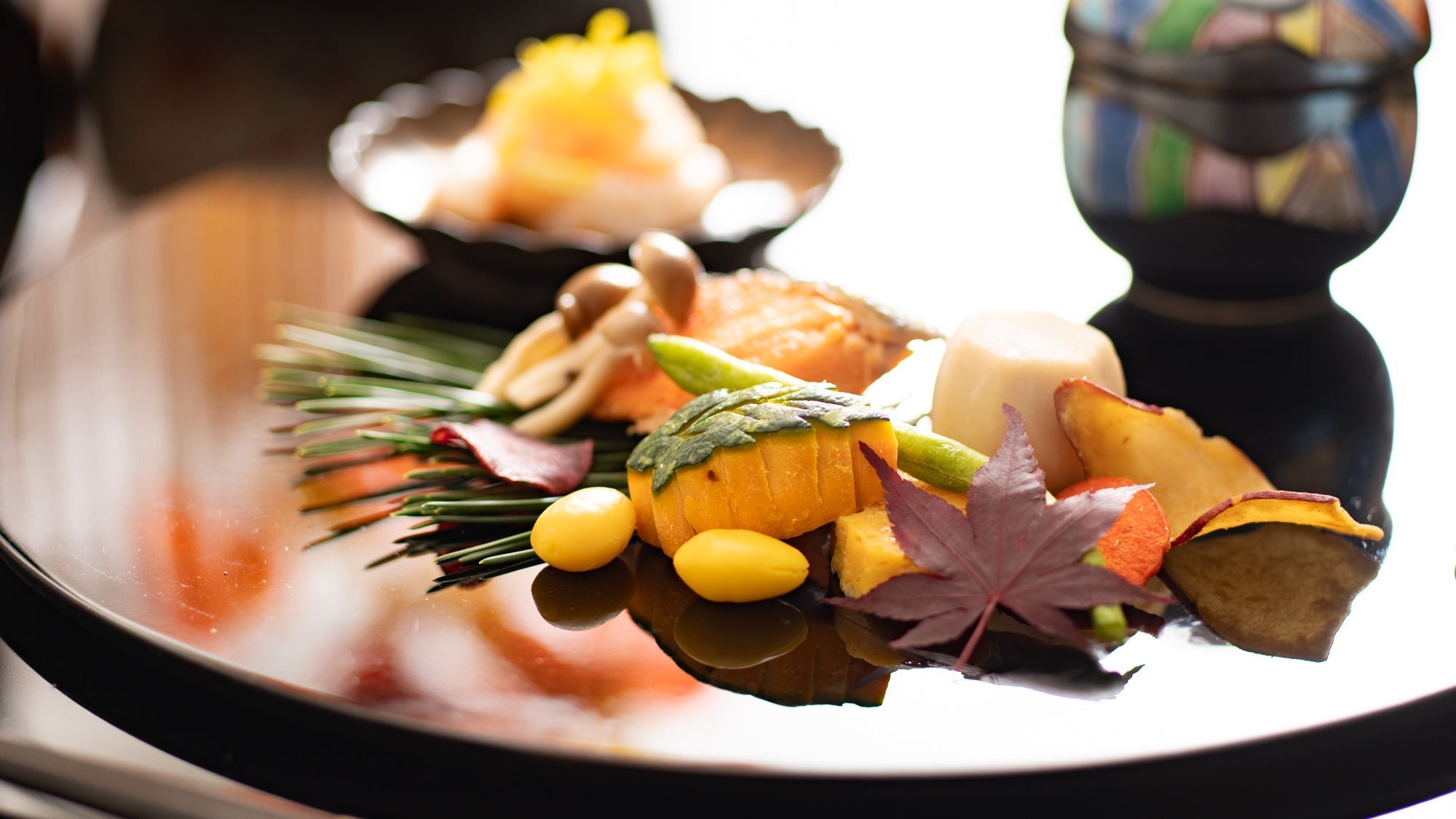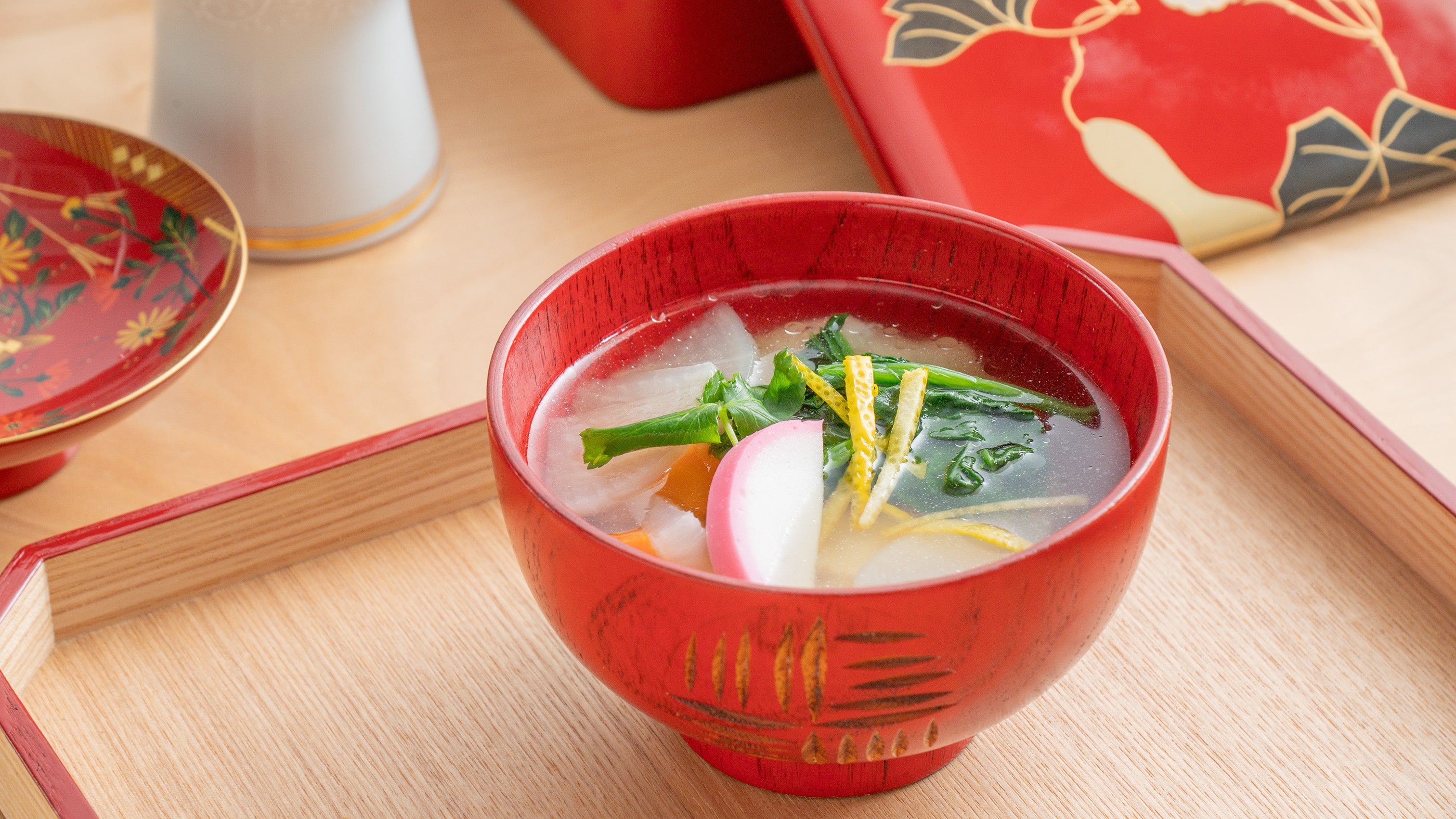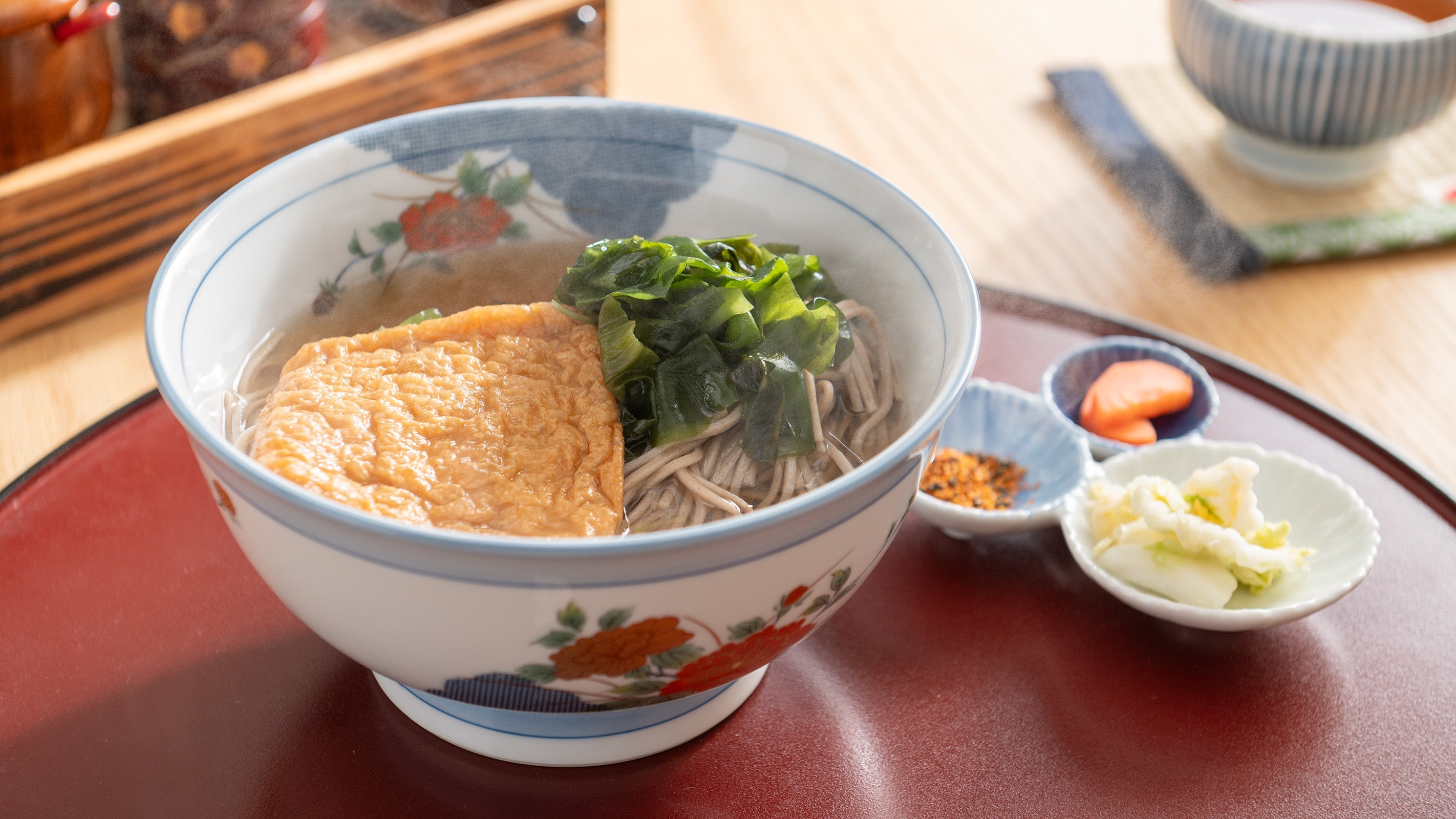
The World of Ashirai: Japanese Fall Tables Adorned with Foliage
Written by Ito Ryo
Around October each year, Japan welcomes the autumn season of koyo, or fall foliage, when people enjoy the beautiful tapestry of red and yellow leaves. But these iconic symbols of fall do more than just color mountains and fields. In Japanese cuisine, red maple and yellow ginkgo leaves are often used to adorn dishes, allowing diners to deeply experience the essence of autumn and savor a fleeting delight.
Furthermore, garnishes called ashirai, which include flowers, leaves, branches, and fruits of seasonal plants, are frequently used in the presentation of traditional Japanese meals.
Ashirai serve the purpose of adding seasonal flair or enhancing the visual appeal of the food. While other countries also use seasonal flowers and plants as culinary accents, a distinctive feature of Japanese cuisine is how this custom is commonly observed not only in fine dining but also in casual restaurants.
In this article, we will introduce the different types of ashirai and the history of their usage in Japanese cuisine, as well as tips for enjoying them at home.
table of contents
Types of Ashirai Garnishes
Tsumamono, a Garnish That Is Also an Ingredient
Ashirai placed primarily beside, in front of, or on top of a dish are called tsumamono. In addition to flowers, vegetables are often used for tsumamono, and many of them are edible.
For example, finely shredded daikon radish, shiso leaves, wasabi, and small chrysanthemum flowers served with sashimi are all considered tsumamono. Depending on the arrangement and shape, they may be referred to by different terms. When placed next to sashimi, they are called ken “sword garnish”; when placed underneath, they are referred to as shiki-zuma “underlay garnish”; and when vegetables are intricately shaped like flowers using a knife, they are called kazari-zuma or “decorative garnish.”

At some long-established Kyoto restaurants, sea bream sashimi is served throughout the year, but the types of tsumamono change to express the essence of the season. In the summer, the sashimi is garnished with flowering stems of shiso, which bloom during the hot season. In the fall, the sea bream is adorned with chrysanthemums, which are closely associated with autumn. Besides adding decorative beauty to the dish, these garnishes also serve to stimulate appetite, aid digestion, suppress the fishy smell, and even prevent food poisoning through their antibacterial properties.

Tsumamono are also commonly used with grilled fish. Examples include cherry blossoms in the spring, bamboo leaves in the summer, maple leaves in the fall, and nandina berries in the winter, although these are not meant to be eaten. Edible tsumamono, on the other hand, include hajikami, pickled young ginger, and citrus fruits such as yuzu or kabosu, which are squeezed over the cooked fish for added flavor.
Kaishiki, Purely Ornamental Leaves
The other type of ashirai is called kaishiki, which is primarily used as a base beneath the dish being served. Kaishiki express seasonality as well as a sense of cleanliness and, in principle, are not meant to be consumed.
The origin of kaishiki dates back to ancient Japan, when leaves or woven vines were used in place of plates. As earthenware dishes began to be made, leaves were placed under the food to prevent the smell of the pottery from transferring to the ingredients, which eventually evolved into the kaishiki we see today.

Leaves of the cast iron plant and bamboo grass are representative examples of kaishiki, often used when plating sashimi and sushi. In times when refrigeration was not as advanced, these leaves were also used for their preservative and deodorizing properties.
In addition to these leaves, small branches with cherry blossoms or bamboo shoot skin are used in the spring. In summer, fresh green maple leaves or lotus leaves are common, while in autumn, red maple leaves, ginkgo leaves, persimmon leaves, and chestnut leaves are favored. In winter, evergreen plants like pine needles, nandina with red berries, and urajiro (a type of fern) are used.
Another interesting aspect of kaishiki is that some are imbued with wishes for good fortune. For example, nandina leaves are used to ward off evil and misfortune, while yuzuriha leaves symbolize hopes for prosperity and the flourishing of future generations.
How are Ashirai Made?
In Kamikatsu, the production and shipment of ashirai under the brand name IRODORI began in 1987. At its peak, the brand achieved annual sales of 260 million yen, with approximately 80% of the national share of ashirai coming from Kamikatsu. I contacted a representative from IRODORI Co., Ltd., the company in Kamikatsu that manages orders and sales for ashirai, and received detailed insights into their production process.

In Kamikatsu, around 30 to 40 types of ashirai are shipped each month, totaling approximately 300 varieties annually, all produced by about 140 local farms. The average age of the farmers is 70, and since leaves, branches, and flowers are lighter and easier to handle than typical crops, women primarily lead the production efforts.
Kamikatsu, where agriculture is the primary industry, had traditionally thrived in the production of ornamental plants alongside food crops, with extensive know-how in cultivation. In the early 1980s, after a cold snap wiped out their mikan orange crops, they began looking for a new crop. At the time, ashirai was not yet recognized as an agricultural product and was considered a niche item, but they quickly set their sights on it. Leveraging the knowledge and experience gained through the cultivation of ornamental plants, they began producing ashirai as an agricultural product that could be grown in small lots and in many varieties throughout the year.
At the same time, they actively sought new customers and quickly established an order and delivery system. By focusing on producing ashirai that met the aesthetic standards favored in Japanese cuisine, ensuring both beauty and uniform sizing, they built a strong reputation and gradually expanded their market share.

In Japanese cuisine, it's common to include the season's first harvested ingredients, known as hashiri, on the menu to give diners an early taste of the season. When restaurants serve these hashiri ingredients, they often pair them with freshly available ashirai. Because Kamikatsu is located in the mountains, the autumn leaves start turning earlier than in the lowlands, giving them an edge in supplying ashirai for restaurants looking to capture the essence of early autumn.
In the beginning, ashirai from Kamikatsu was harvested from trees and plants that naturally grew in farmers' gardens or the surrounding mountains and fields. However, as demand increased and the trees aged, they began replanting and introducing new plants. By carefully managing production and continuing to ship high-quality ashirai from well-maintained plants, even after 40 years in business, Kamikatsu still maintains its position as the leading producer in the nation.
Tips for Using Ashirai in Home Cooking
But how can you incorporate these professional Japanese culinary techniques into home cooking? In Japan, ashirai can be found in some department stores and supermarkets, but outside of Japan, they may be harder to find (aside from vegetables). That said, even in other countries, you can still collect leaves from plants in your garden or from nature, or use store-bought edible flowers.
To find out what to keep in mind when using ashirai at home, I spoke with Mizutani Mieko, our tablescape designer at MUSUBI KILN.

“For example, you might place a large bamboo leaf so it slightly extends beyond the edge of the plate to create a sense of elegance or a dynamic quality in the presentation. But even in that case, it’s best not to let the leaf hang too far off the plate. When using flowers, rather than placing a whole bloom, try scattering just the petals randomly to create a look that’s both vibrant and refined. Always keep the balance among the food, plate, and ashirai in mind.”

However, Mizutani also points out some important precautions.
"If you are using plants you've gathered yourself, it’s crucial to select safe options without any risk of toxicity or injury, such as thorns. Even if the ashirai is not intended to be eaten, it will almost certainly come into contact with the food, and there's always a chance that part of it may accidentally end up in someone's mouth during the meal. You also need to be careful to avoid plants that easily shed pollen, fuzz, or seeds, as well as those with overly strong fragrances, as they can interfere with the dining experience."
Lastly, she offers advice when fresh plants aren't available.
"For dishes like fried or grilled foods that use kaishiki under them, there are paper alternatives made from materials like washi, Japanese paper. These paper kaishiki often feature seasonal flowers and plants drawn on them, and using these decorative paper kaishiki can also be a great option."

Even though ashirai is not always edible, it enhances the value of a meal through its seasonal feel and vibrant colors, transforming the dining experience into something special. I encourage readers to try adding local seasonal plants or flowers to your dishes when enjoying Japanese cuisine at home for celebrations or special occasions. A simple, natural touch on your plate can brighten the table and help create lasting memories.










Leave a comment
This site is protected by hCaptcha and the hCaptcha Privacy Policy and Terms of Service apply.